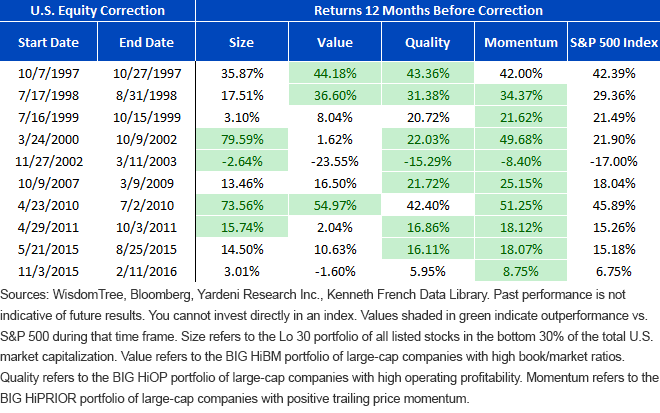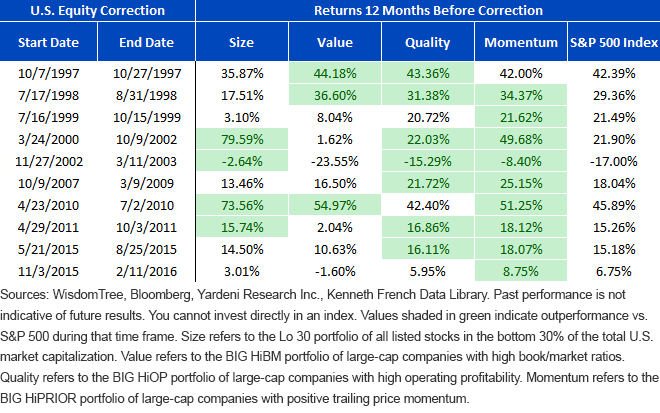Investing is hard. Trying to time the market is harder. Timing return factors at the right time? Forget about it.
The past few years have seen some of the industry’s brightest minds publish papers concerning the feasibility of timing return factors. The conclusions have varied slightly, but most generally agree that when investing in factors, trying to determine which ones to invest in at a given time is an incredibly difficult undertaking.
However, most of these papers analyze factor timing from the lens of the valuations of these factors. What if we take a different approach and see if we can estimate which factors could outperform from the context of where we are in the market cycle?
Where Are We Now?
The U.S. equity bull market started on March 9, 2009. In the almost nine years since then, the S&P 500 has rallied nearly 4005.1 We are certainly not calling for an end to the bull run—in fact, the market environment still appears benign, and corporate earnings have remained strong—but it is certainly not a stretch to claim that we are closer to the end of the cycle than we are to the beginning of it.
As of this writing, we are in the midst of the longest period without a 3% pullback in the history of the S&P 500.2 With implied and realized volatility hovering near their all-time lows, it seems reasonable to expect more choppiness—if not an outright correction—coming in the next few months. Based on what we know from history, what factors tend to outperform in the late stages of market cycles?
Factor Performance Prior to Market Corrections

Late-Stage Outperformers: Momentum, Quality
Dating back to 1990, there have been 10 distinct 10% corrections in the S&P 500,3 with bifurcated results in the months preceding the correction. In the lead-up to the downturns, momentum and quality stocks have seen consistent excess performance compared to the market, whereas the size and value factors have generally underperformed.









Leave A Comment